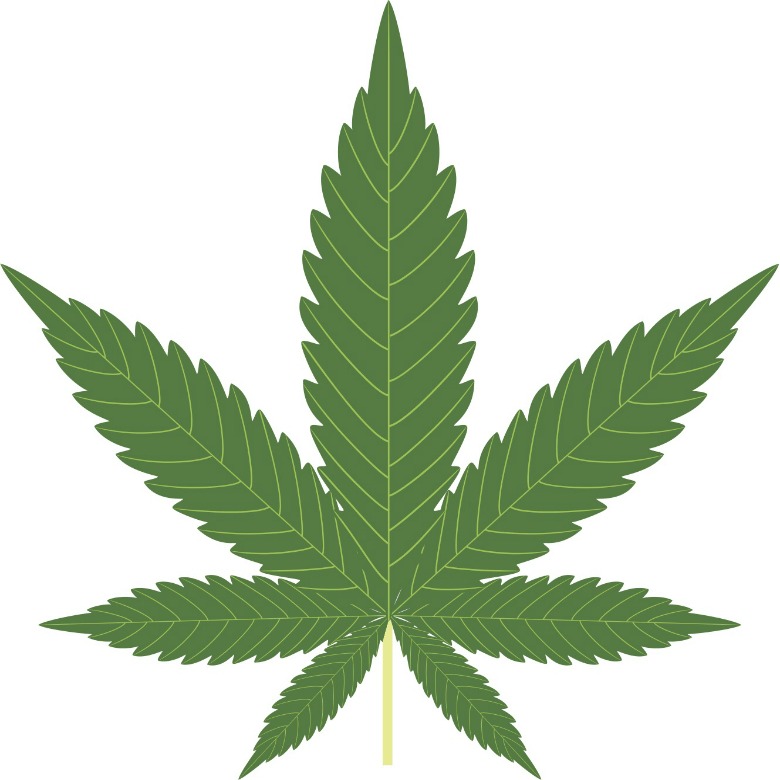As the nation’s nearly 80-year history of pot prohibition slowly begins to crumble, starting with Colorado’s recent implementation of taxed and legalized recreational marijuana, critics of the increasingly popular policy shift are jumping to denounce the move. A number of white pundits and newspaper columnists have been among the most vocal, claiming that marijuana must remain illegal, despite their own prior use of it, because it supposedly makes people dumber.
The columns themselves served as the most persuasive evidence of that point. And while such a correlation between pot use and intelligence has yet to be proven, one must be willing to ignore the racist roots of marijuana prohibition and the manner in which this unjust system of anti-drug enforcement still plays out today to make such a shallow argument in the first place.
In a column for The Fix, Maia Szalavitz reminds us that Harry Anslinger, the father of the war on weed, fully embraced racism as a tool to demonize marijuana. As the first commissioner of the Federal Bureau of Narcotics, a predecessor to the Drug Enforcement Administration, Anslinger institutionalized his belief that pot’s “effect on the degenerate races” made its prohibition a top priority. Here are just a few of his most famous (and most racist) quotes:
“There are 100,000 total marijuana smokers in the U.S., and most are Negroes, Hispanics, Filipinos and entertainers. Their Satanic music, jazz and swing result from marijuana use. This marijuana causes white women to seek sexual relations with Negroes, entertainers and any others.”
“Reefer makes darkies think they’re as good as white men.”
Between Anslinger’s ruminations on the need to keep marijuana away from minorities — especially the entertainers! — were countless other fabrications about the health effects of pot. It was “more dangerous than heroin or cocaine” and “leads to pacifism and communist brainwashing,” he claimed.
“If the hideous monster Frankenstein came face to face with marijuana, he would drop dead of fright,” Anslinger declared in a line that underscored the type of extreme anti-marijuana hysteria that served as a catalyst for the 1936 propaganda film “Reefer Madness.”
Anslinger was also a liar. As the drug war got going in the early 20th century, the bureau published surveys showing its efforts to combat drug use had led to dramatic declines over the decade of the 1920s. But drug historian David Courtwright, through a Freedom of Information Act request, got his hands on the actual surveys and found the data to have been fabricated. He also found a private memo from Anslinger admitting the numbers were made up. Nevertheless, Anslinger used that success to argue for an expansion of the drug war to weed in 1937. (The incident is covered in the book This Is Your Country On Drugs, by HuffPost’s Ryan Grim.)
Meanwhile, states throughout the south began implementing drug laws as part of the explicitly racist Jim Crow system, with southern lawmakers being quite open about the racist motivations behind the laws.
Sure, this was more than 75 years ago, but how much has actually changed today? The feds have stripped Anslinger’s offensive language from their official mission statements, but we are left with anti-drug policies that are hardly less racist in their application.
According to a 2013 study by the American Civil Liberties Union, blacks across the nation were nearly four times more likely than whites to be arrested on charges of marijuana possession in 2010, despite data that suggested they use the drug at about the same rate. In some states, blacks were up to six times more likely to be arrested. This disparity isn’t new, and plays into broader arrest data: A study published in the journal Crime & Delinquency this month found that by the age of 23, nearly 50 percent of black males have been arrested, compared to 44 percent of Hispanic males and 38 percent of white males.
In all, around 750,000 people are arrested for marijuana each year, with more than 650,000 of them for possession alone. (The U.S., of course, incarcerates a higher percentage of its population than any other nation in the world.)
As Tressie McMillan Cottom writes in Slate, these commonplace arrests for simple marijuana possession have rippling effects, especially in minority communities. Anyone convicted of possession or sale of a controlled substance under federal or state law forfeits their eligibility for any [federal] grant, loan, or work assistance, meaning that a dimebag could cost a hopeful teen his shot at an affordable higher education.
And though the anti-marijuana hyperbole of the “Reefer Madness” era may no longer be believable today, our current anti-drug policies remain bolstered by arguments that have little, if any, factual basis. According to federal authorities, marijuana fully deserves its current standing as a Schedule I substance, alongside heroin, LSD, ecstasy and a “Fear & Loathing In Las Vegas”-length list of inorganic -dines, -mines, -dols and -ates. By definition, then, the government considers marijuana to have “no currently accepted medical use and a high potential for abuse.” It is among the “most dangerous drugs of all … with potentially severe psychological or physical dependence.”
Opponents regularly cherry-pick studies that support these conclusions about weed, while simultaneously ignoring others that may counter them, or at least lead to further questions about whether marijuana is accurately scheduled. Anti-pot crusaders also stubbornly insist that it is a “gateway drug,” despite countless studies that have been unable to prove any direct causation between using weed and trying harder drugs.
Regardless of what individual studies have found, the fact of the matter is that the federal ban on marijuana has discouraged the type and volume of research that will likely need to be done before any absolute conclusions can be made about weed. Until then, very little is certain — except for the racial undertones of the war on pot.
![VannDigital.com (2022) [Light Banner-Viral Pro]](https://www.vanndigital.com/wp-content/uploads/vanndigitalcom-2022-light-banner-viral-pro.png)









